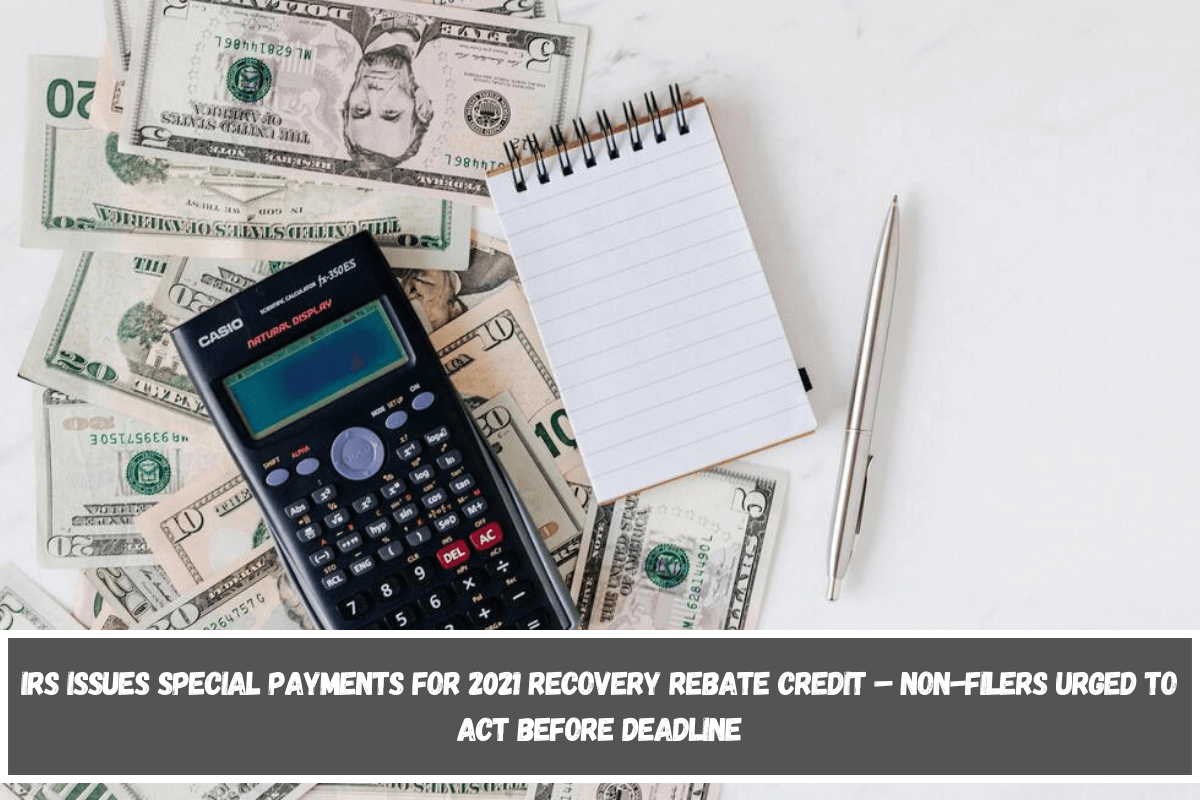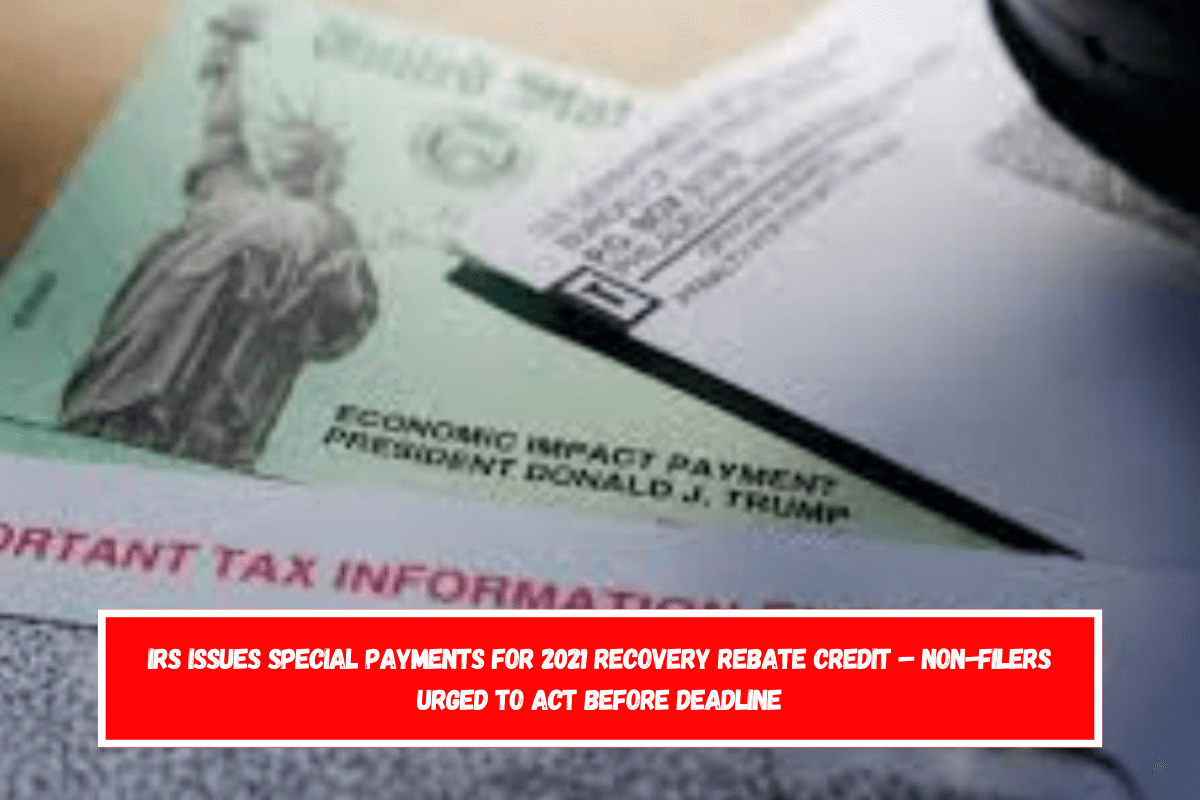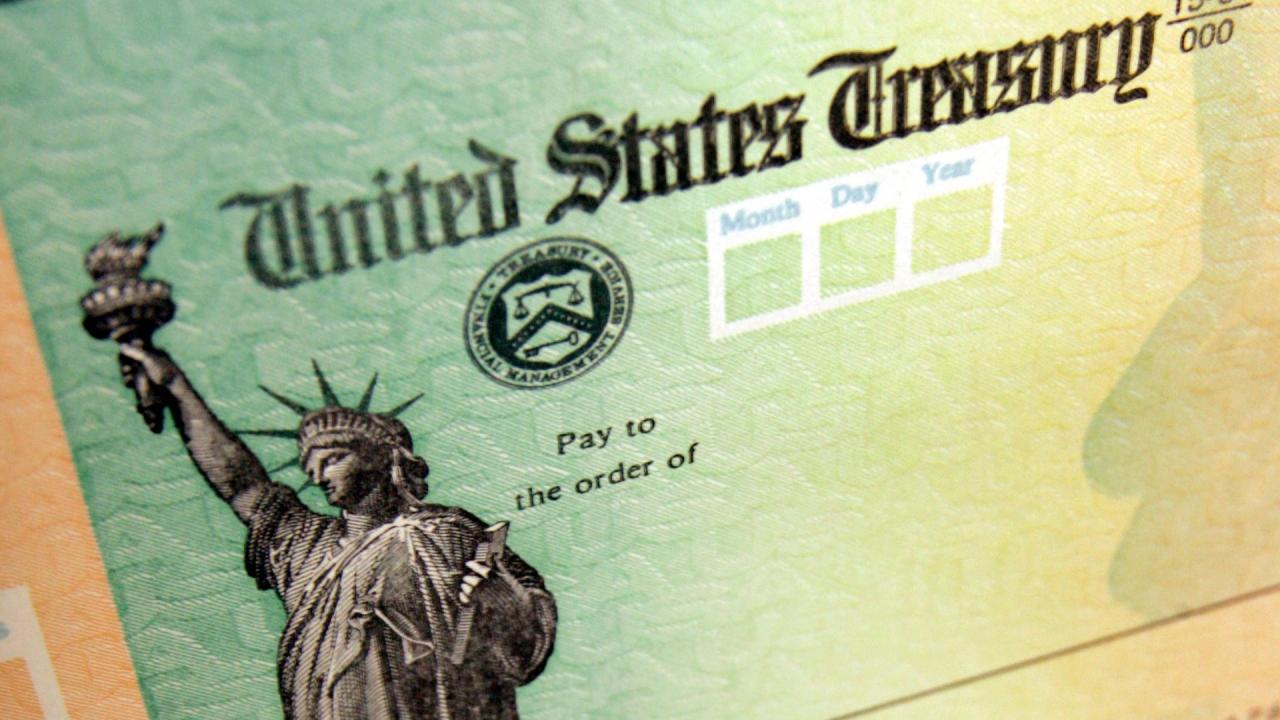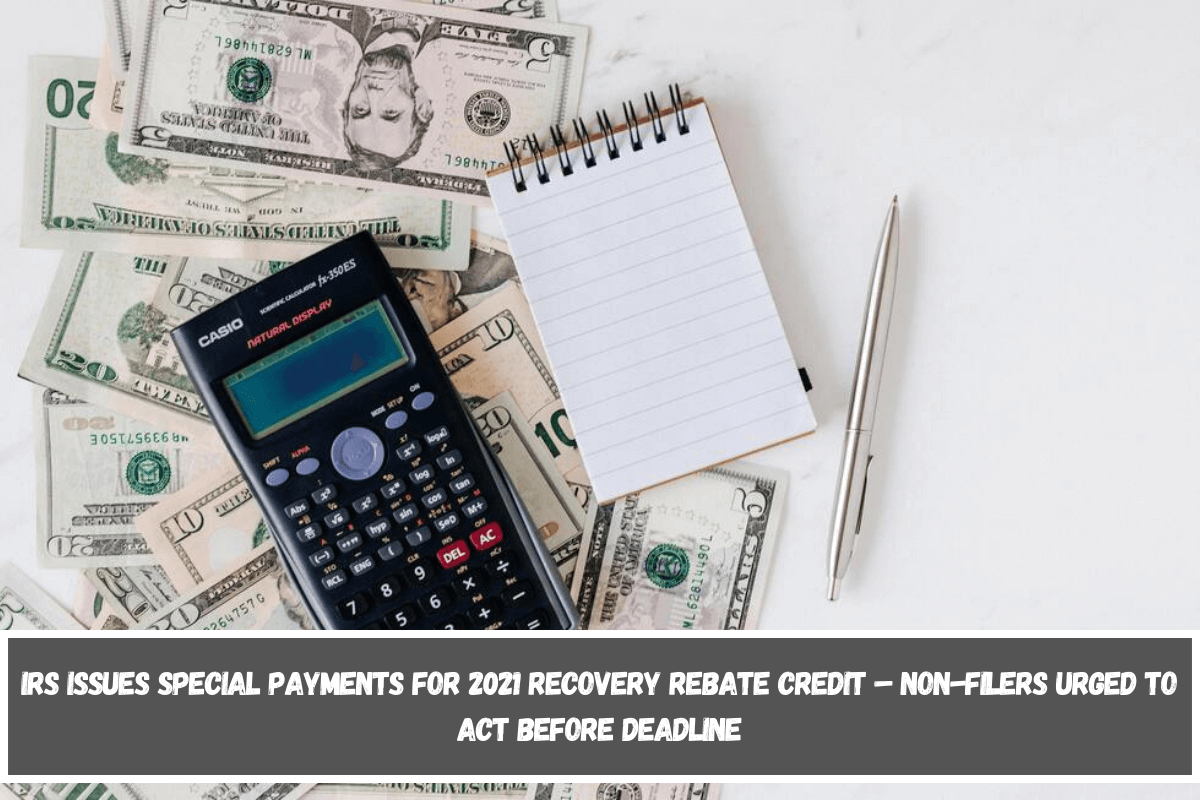With the Recovery Rebate Credit taking center stage, we delve into a compelling narrative that unravels the intricacies of this crucial financial lifeline, exploring its impact on individuals, families, and the economy as a whole.
The Recovery Rebate Credit emerged as a beacon of hope during the pandemic, providing much-needed financial relief to countless Americans. In this comprehensive guide, we’ll navigate the ins and outs of this credit, from eligibility criteria to filing procedures, shedding light on its profound impact and the policy considerations that shaped its implementation.
Recovery Rebate Credit Overview
The Recovery Rebate Credit is a tax credit created by the CARES Act to provide economic relief to individuals and families during the COVID-19 pandemic. It is a refundable tax credit, meaning that if the amount of the credit is greater than the taxes you owe, you will receive a refund.The eligibility criteria for the Recovery Rebate Credit are as follows:* You must be a U.S.
citizen or resident alien.
- You must have a valid Social Security number.
- You must not be claimed as a dependent on someone else’s tax return.
- Your income must be below certain limits.
The amount of the Recovery Rebate Credit is based on your filing status and income. The maximum amount of the credit is $1,200 for single filers, $2,400 for married couples filing jointly, and $500 for each qualifying child. The credit is phased out for higher incomes.The Recovery Rebate Credit is calculated based on your 2019 tax return.
If you have not yet filed your 2019 tax return, you can still claim the Recovery Rebate Credit on your 2020 tax return.
How to Claim the Recovery Rebate Credit
You can claim the Recovery Rebate Credit on your 2019 or 2020 tax return. If you have already filed your 2019 tax return, you can claim the credit by filing an amended return.To claim the Recovery Rebate Credit, you will need to complete the Recovery Rebate Credit Worksheet.
The worksheet is available on the IRS website.If you are eligible for the Recovery Rebate Credit, you will receive the credit as a refund. The IRS began issuing refunds for the Recovery Rebate Credit in April 2020.
Impact of the Recovery Rebate Credit
The Recovery Rebate Credit has provided much-needed economic relief to individuals and families during the COVID-19 pandemic. The credit has helped to offset the financial impact of the pandemic, such as job losses and reduced income.The Recovery Rebate Credit has also helped to stimulate the economy.
The credit has increased consumer spending, which has helped to support businesses and create jobs.
Filing for the Recovery Rebate Credit
Claiming the Recovery Rebate Credit on your tax return involves specific steps and considerations. Here’s an overview of the process:
Eligibility and Documentation
To claim the credit, you must meet certain eligibility criteria, including having a valid Social Security number and meeting income limits. You may need to provide supporting documentation, such as a W-2 form or self-employment income records.
Form Selection
The tax form you use to claim the credit depends on your filing status. Most taxpayers will use Form 1040, while those with more complex tax situations may need to use Form 1040-SR or Form 1040-NR.
Line Entry
The Recovery Rebate Credit is entered on a specific line of the tax form. For Form 1040, the credit is entered on Line 30, labeled “Recovery Rebate Credit.” Enter the amount of the credit you are eligible for, which may be different from the full amount of the credit.
Special Considerations
Some taxpayers may have special considerations when claiming the credit. For example, individuals who received an Economic Impact Payment in 2021 but did not receive the full amount may be eligible for an additional credit on their tax return.
Impact of the Recovery Rebate Credit
The Recovery Rebate Credit provided significant economic relief to individuals and families during the COVID-19 pandemic.
Economic Impact on Individuals and Families
The credit provided direct financial assistance to low- and moderate-income households, helping them meet essential expenses, such as rent, food, and utilities. The credit also reduced household debt and increased savings, providing a financial cushion during the economic downturn.
Stimulating Spending and Supporting Recovery
The credit had a positive impact on consumer spending. Individuals and families used the funds to purchase goods and services, supporting businesses and stimulating economic growth. The credit also helped to maintain consumer confidence during a period of uncertainty.
Case Studies
A study by the Center on Budget and Policy Priorities found that the Recovery Rebate Credit increased consumer spending by an estimated $1.2 trillion in 2020. The credit also reduced the poverty rate by 2.3 percentage points.
Comparison with Other Stimulus Measures
The Recovery Rebate Credit was one of several government stimulus measures implemented during the COVID-19 pandemic. These measures were designed to provide financial relief to individuals and families, as well as to stimulate the economy.The Recovery Rebate Credit was similar to other stimulus measures in that it was a direct payment to eligible individuals.
However, there were also some key differences between the Recovery Rebate Credit and other stimulus measures.
Eligibility
The Recovery Rebate Credit was available to individuals who met certain income requirements. The maximum amount of the credit was $1,200 for single filers and $2,400 for married couples filing jointly. The credit was phased out for individuals with incomes above certain thresholds.Other stimulus measures, such as the Economic Impact Payments, were available to a wider range of individuals.
The Economic Impact Payments were available to all individuals with a Social Security number, regardless of their income.
Amount, Recovery rebate credit
The Recovery Rebate Credit was a one-time payment of up to $1,200 for single filers and $2,400 for married couples filing jointly. Other stimulus measures, such as the Economic Impact Payments, were larger. The Economic Impact Payments were a one-time payment of up to $1,200 for single filers and $2,400 for married couples filing jointly, plus an additional $500 for each dependent child.
Impact
The Recovery Rebate Credit had a significant impact on the economy. The credit boosted consumer spending and helped to stimulate economic growth. Other stimulus measures, such as the Economic Impact Payments, also had a significant impact on the economy. The Economic Impact Payments helped to reduce poverty and food insecurity.The following table summarizes the key differences between the Recovery Rebate Credit and other stimulus measures:| Stimulus Measure | Eligibility | Amount | Impact ||—|—|—|—|| Recovery Rebate Credit | Individuals who met certain income requirements | Up to $1,200 for single filers and $2,400 for married couples filing jointly | Boosted consumer spending and stimulated economic growth || Economic Impact Payments | All individuals with a Social Security number | Up to $1,200 for single filers and $2,400 for married couples filing jointly, plus an additional $500 for each dependent child | Reduced poverty and food insecurity |
Policy Considerations
The implementation of the Recovery Rebate Credit was guided by several key policy considerations. Firstly, the government aimed to provide immediate and direct financial relief to individuals and families experiencing economic hardship due to the COVID-19 pandemic. The credit was designed to be simple to claim and accessible to a wide range of taxpayers, regardless of their income or filing status.
Secondly, the government sought to stimulate economic activity by increasing disposable income for consumers. The Recovery Rebate Credit was intended to encourage spending and support businesses, particularly those in sectors that had been disproportionately affected by the pandemic.
Alternative Approaches
Alternative approaches to providing economic relief during the pandemic included:
- Expansion of unemployment benefits:Extending the duration and increasing the amount of unemployment benefits could have provided more targeted support to individuals who had lost their jobs due to the pandemic.
- Payroll tax holiday:Suspending payroll taxes for a period of time could have increased take-home pay for workers and stimulated consumer spending.
- Direct cash payments:Providing direct cash payments to all Americans, regardless of their income or employment status, could have been a more equitable and efficient way to distribute relief.
Each of these approaches had its own advantages and disadvantages, and the Recovery Rebate Credit was ultimately chosen as the most effective and efficient way to provide immediate and targeted relief to individuals and families.
Recommendations for Future Policy Decisions
The Recovery Rebate Credit has been a valuable tool in providing economic relief during the COVID-19 pandemic. However, as the pandemic continues and the economy recovers, it is important to consider future policy decisions related to stimulus measures.
One key consideration is the need for ongoing support for individuals and families who continue to experience economic hardship. This could include extending or expanding existing programs, such as unemployment benefits or food assistance, or creating new programs to address specific needs.
Another consideration is the potential for future economic downturns. It is important to have a plan in place to provide swift and effective economic relief in the event of another crisis. This could involve creating a permanent fund for stimulus measures or developing a set of automatic triggers that would activate relief programs when certain economic conditions are met.
Conclusion
As we conclude our exploration of the Recovery Rebate Credit, it’s evident that this measure has served as a vital economic stimulus, supporting individuals and families while fostering recovery. Its legacy will continue to shape future policy decisions, underscoring the importance of targeted financial assistance in times of crisis.
Expert Answers
What is the purpose of the Recovery Rebate Credit?
The Recovery Rebate Credit was a one-time tax credit designed to provide financial relief to individuals and families during the COVID-19 pandemic.
Who was eligible for the Recovery Rebate Credit?
To be eligible, individuals had to meet certain income and filing status requirements. Generally, those with adjusted gross incomes below specific thresholds were eligible for the full credit.
How much was the Recovery Rebate Credit?
The amount of the credit varied based on filing status and income. For single filers, the maximum credit was $1,200, while married couples filing jointly could receive up to $2,400.
How was the Recovery Rebate Credit claimed?
Individuals could claim the credit on their 2020 tax returns. Those who did not receive the full amount through automatic payments could claim the remaining credit on their tax return.
What was the economic impact of the Recovery Rebate Credit?
The credit provided a significant boost to consumer spending and helped stimulate the economy during a time of economic uncertainty.




